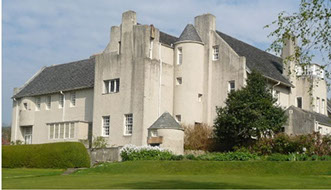
2014 IHBC Annual School
The Art of Conservation
Edinburgh, Thursday 5th to Saturday 7th June
-
Introduction
-
What, where, why?
-
Who should go
-
Benefits
-
Speakers
-
Thursday 5th June
-
Friday 6th June - Day School
-
Saturday 7th June
-
Downloadable programme
-
Orkney Opportunity
-
School Venues
-
Directions to Pollock Halls
-
Delegate rates
-
Booking here
-
Sponsors, Supporters and Friends
-
Exhibition space and delegate information
-
School Bursaries
-
Joining Instructions
-
Return to IHBC main site
What, where, why?

What? Conservation: Art & change!
Bringing together diverse specialists and disciplines to explain and explore how art helps shape how we assess, manage and even generate change across our historic places: from structures and sites to fabric and materials.
Explore art as a:
• Resource, to shape change: regeneration, masterplanning & design
• Variable, to manage change: policy, finances & legislation
• Value, to inform change: principles, significance and aesthetics
Where? Edinburgh
The School will be based in Edinburgh, cultural icon, capital of Scotland and World Heritage Site. A historic city, hotbed of the enlightenment and ‘Athens of the North’, Edinburgh is an ideal vessel to consider the art of Conservation, having been the focus for centuries of development and debate, with a resulting world-class heritage to explore. The main venue is in the centrally located University of Edinburgh Pollock Halls, itself a conservation thought-piece. Link
The Annual School includes specialist site visits, and additional networking events in historic settings around Edinburgh, the Lothians and the Scottish Borders.
These range from the diverse heritage of the Scottish Borders (including the former home of Sir Walter Scott) to a once in a lifetime chance to go atop the iconic Forth Bridge, nominated for World Heritage Site inscription.
Why? Art of conservation - Art in conservation
Conservation is, among other disciplines, an ‘artistic’ activity, as confirmed in the 1993 ICOMOS conservation guidelines. Similarly aesthetic judgements are central to conservation advice. But what can these words mean to a busy practitioner, researcher or trainee working with historic places in the 21st century?
At the 2014 School re-discover, or uncover, the potential of art to the theory and practice of conservation today, and explore new opportunities, policy developments and trends bringing it back to centre-stage across policy, philosophy and practice. Cases will range across important issues facing conservation: funding; training; project development and management; engineering and landscape, as well as planning, urban design and much more.
See art as a critical driver in conservation policy and practice, as well as for the evolution of conservation philosophy.
Registered as a Charity No1061593 Company Limited by Guarantee. Registered in England No. 3333780
Registered as a Charity in Scotland: No. SC041945 Registered Office: 3, Stafford Road, Tunbridge Wells, Kent. TN2 4QZ